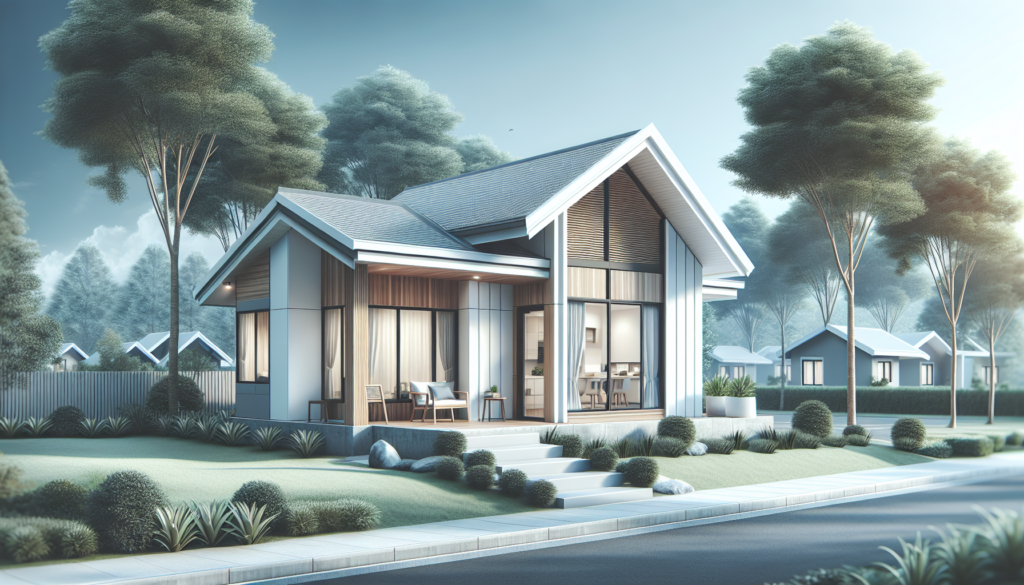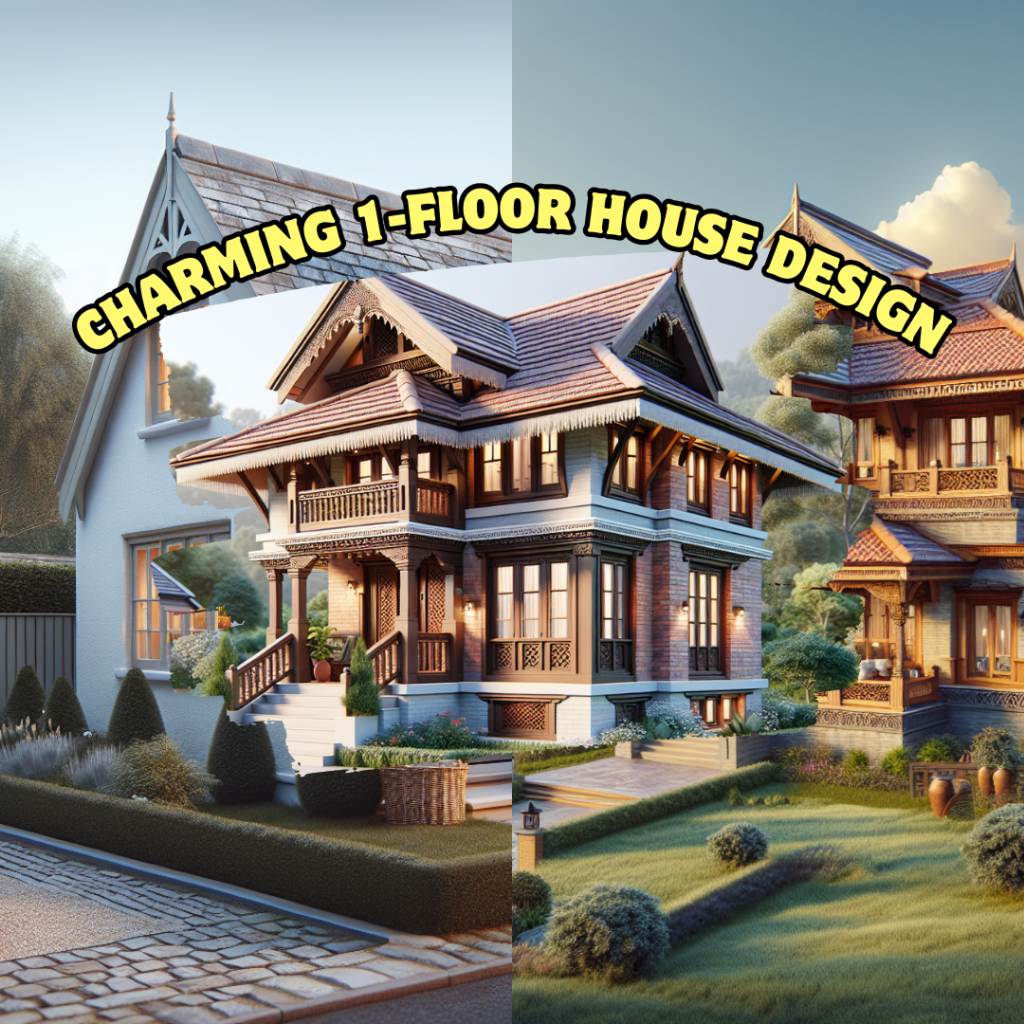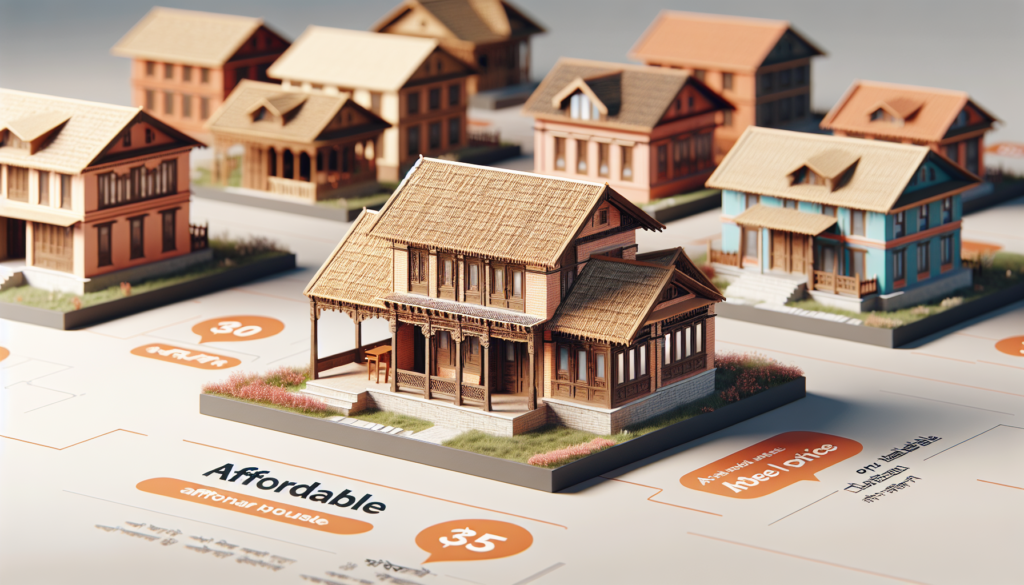Welcome to the world of cost-effective housing in Nepal, where the charm of cultural aesthetics marries the pragmatism of economical home designs. In this in-depth article series, uncover the secrets behind cheap house design in Nepal that are transforming the lives of numerous homeowners across this beautiful Himalayan nation. Whether you’re on the lookout for low-cost Nepali homes or just seeking guidance on creating your haven without breaking the bank, this guide aims to provide you with all the resources you need to make informed decisions.
Key Takeaways
- Discover the nuances of creating a beautiful and functional home on a budget.
- Learn about the role of Nepal’s socio-economic landscape in shaping housing trends.
- Gain insights into innovative design strategies that prioritize affordability.
- Explore the synergy between space efficiency and cost reduction in home planning.
- Understand how sustainability can lead to both ecological and economic benefits.
- Appreciate the infusion of Nepalese cultural heritage into modern, budget-friendly homes.
- Get practical advice on material selection and working with home design professionals.
Understanding the Housing Market in Nepal
The Nepali real estate trends are a complex tapestry, woven with a variety of economic and cultural threads. To comprehend the fabric of Nepal’s property landscape, one must consider the kaleidoscope of factors that contribute to the current affordable housing landscape. A significant portion of the country’s population grapples with the challenge of finding homes that don’t strain their finances, yet offer comfort and security. Prospective homeowners and investors must possess comprehensive property market insights to navigate the terrains of this market wisely.
In recent years, the housing economy in Nepal has been influenced by rapid urbanization, migration patterns, and evolving socio-economic conditions. The demand for housing, especially affordable options, continues to rise, putting a strain on the available resources and infrastructure. These dynamics have stimulated a burgeoning interest in understanding the real estate market’s nuances and the implications for those seeking economical living solutions. Various stakeholders, from policymakers to private developers, are now focusing on the development of housing schemes that can cater to the broad spectrum of economic capabilities.
- How economic growth trends impact the demand for housing in Nepal
- The balance between housing supply and burgeoning urban populations
- Investment opportunities arising from housing and real estate demands
- The role of government policies in shaping the affordable housing market
Amidst these developments, several key factors have been identified that sway the Nepali real estate trends and the affordable housing landscape. Let’s analyze them through the lens of recent market activities:
| Economic Indicator | Impact on Real Estate | Relevance to Affordable Housing |
|---|---|---|
| GDP Growth Rate | Increased economic activity, leading to higher demand for housing | Potentially more investment in affordable housing projects |
| Inflation Rate | Increased cost of construction materials and property values | Creating challenges for low- and middle-income buyers |
| Foreign Direct Investment (FDI) in Real Estate | Boosts construction and development of new housing projects | May lead to a wider range of housing options at various price points |
| Urbanization Rate | Demand shifts from rural to urban housing, escalating prices in cities | Raises the urgency for affordable urban housing solutions |
Grasping these trends and indicators offers a clearer picture of the housing economy in Nepal, driving informed decisions for stakeholders. For those with a limited budget, understanding these patterns is not merely academic; it is a practical necessity that informs the feasibility of their housing dreams. Thus, the quest for home ownership, particularly within the realm of affordability, becomes an expedition that requires thorough market knowledge, tenacity, and strategic planning.
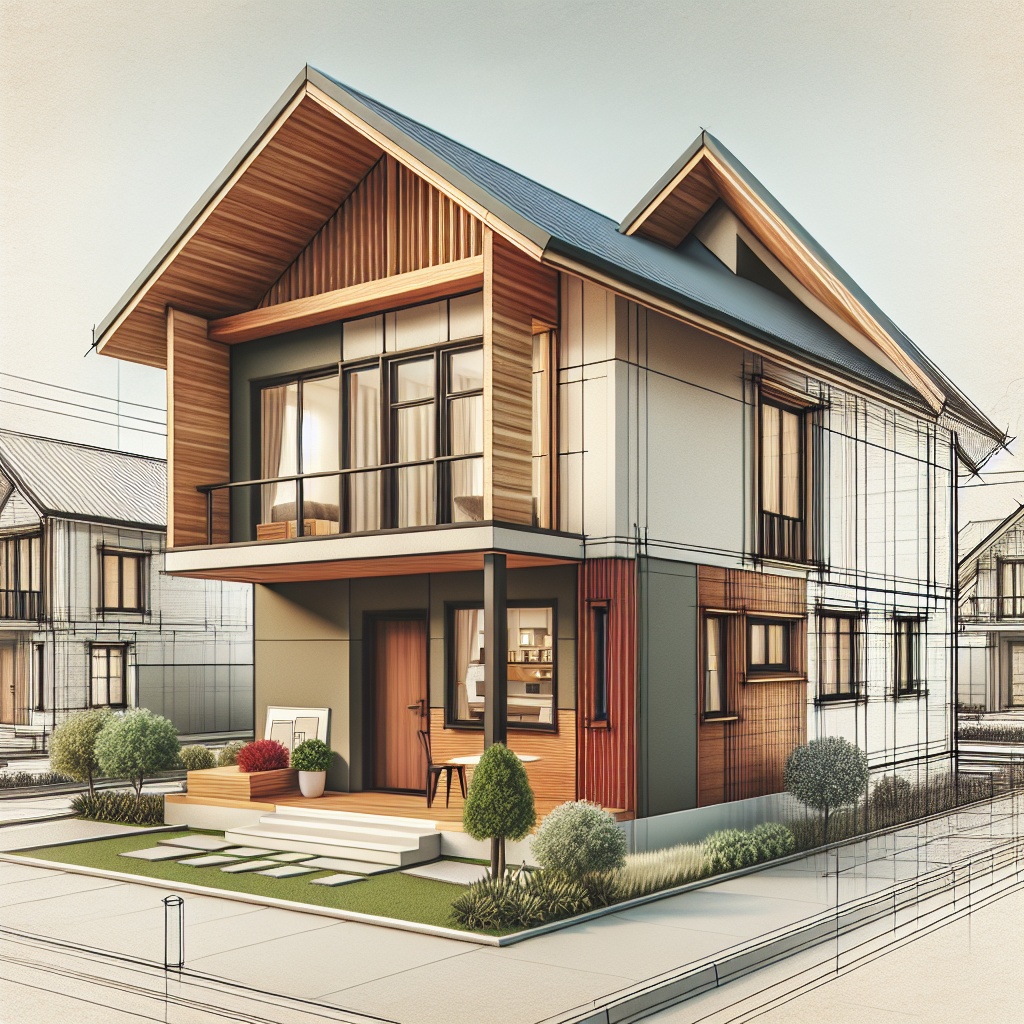
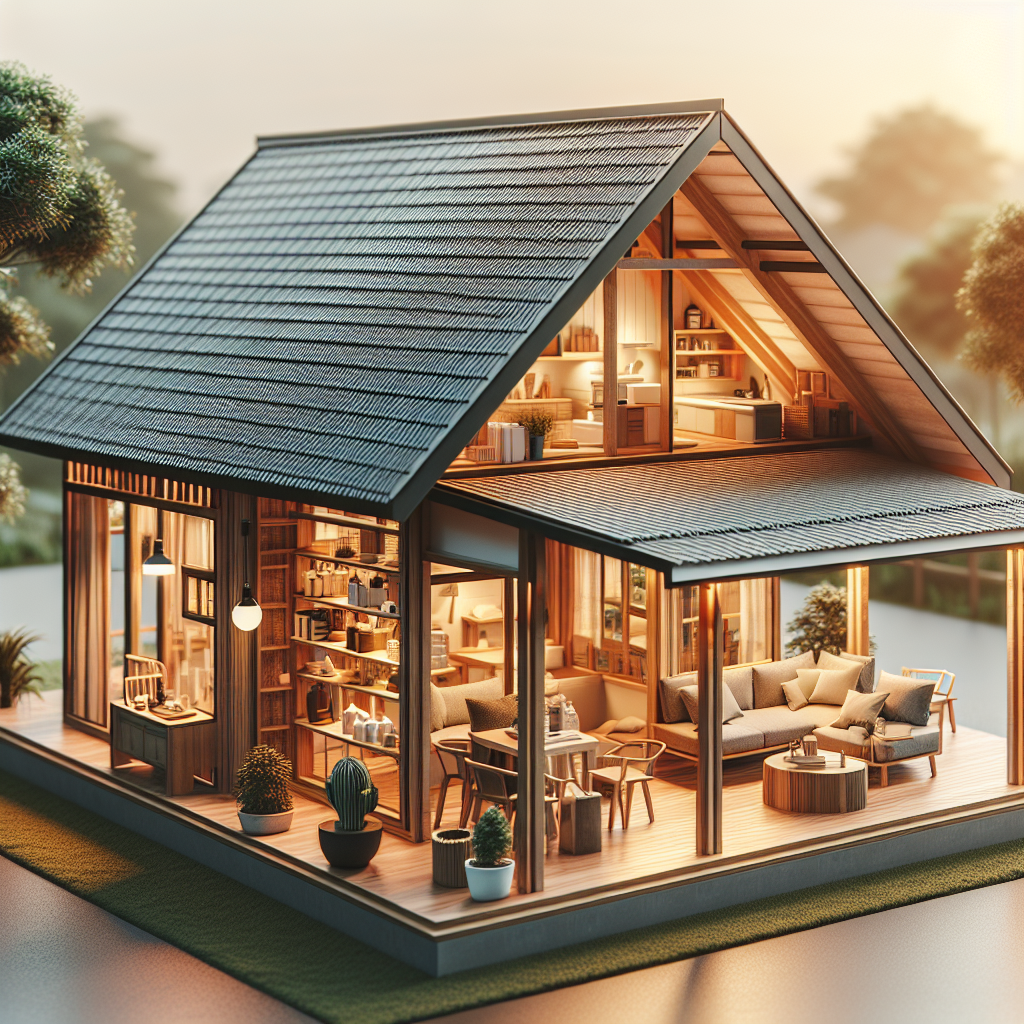
Cheap House Design in Nepal
When it comes to low-cost building techniques and affordable Nepali house models, one might mistakenly think that affordability equates to a compromise in aesthetics or functionality. However, various inexpensive architectural designs present in Nepal stand as a testament to the contrary. Through innovative thinking and strategic planning, homeowners are now able to embrace budget construction in Nepal that reflects their style and meets their needs without draining their wallets.
In the pursuit of cost-effective housing solutions, several components emerge as essential to keeping overheads low while delivering quality living spaces. Among these components are:
- Smart layout considerations that make the most out of available square footage
- Selecting building materials that are both durable and economical
- Utilizing design innovations that cut costs without sacrificing the integrity of the structure
Material choices play an integral role in the cost of home construction. By using locally sourced materials or alternative construction methods that are less labor-intensive, builders can significantly reduce expenses. Below is a table showcasing various materials used in Nepali home construction and their relative costs and benefits.
| Material | Cost | Benefits | Typical Use |
|---|---|---|---|
| Bamboo | Low | Sustainable, flexible, and strong | Framework, wall cladding |
| Mud Bricks | Low to Moderate | Eco-friendly, provides thermal mass | Walls, firewalls |
| Stone | Moderate | Durable, abundant locally | Foundations, walls |
| CGI Sheets | Moderate | Easy to install, low maintenance | Roofing |
| Cement | Moderate to High | Strong, versatile | Structural elements, finishes |
Layouts within affordable Nepali homes must be meticulously planned. Each square foot is accounted for to ensure that the final design is both space-efficient and suitable for the specific needs of the inhabitants. The inclusion of multi-purpose areas, creative storage solutions, and the omission of unnecessary passageways are just a few examples of layout considerations that can lead to a significant cost reduction.
Lastly, design innovations such as modular housing or prefabricated elements can streamline the construction process, reducing the time and labor involved. When combined with traditional Nepali aesthetics and modern needs, these approaches yield living spaces that are economical, culturally rich, and perfectly tailored to the unique lifestyle of each homeowner.
Maximizing Space within Small Footprints
In the quest for small home optimization, every inch counts. The ability to make an impact in a limited area requires ingenuity and a keen eye for efficient use of space. By prioritizing functionality without sacrificing style, homeowners can transform compact zones into expansive havens. The following strategies showcase how one can thrive within a small footprint by maximizing square footage through clever design and layout techniques.
Space-Saving Layouts
One fundamental approach to maximizing space is through the adoption of space-saving layouts. These are purposefully designed to enhance the flow within a home, eliminating redundancy and prioritizing necessity. Essential to this design principle is the elimination of seldom-used areas, such as formal dining rooms, which can be merged with other living spaces to create a cohesive and flexible environment.
Multifunctional Rooms
Multifunctionality is at the core of modern small home optimization. A room that can seamlessly transition from a home office to a guest bedroom or a lounge is a prime example of intelligent use of space. Furniture with dual purposes, such as Murphy beds or ottomans with storage, is pivotal in creating a versatile and adaptable living area.
Open Plan Living Concepts
Embracing open-plan living concepts further amplifies the perception of space within a small footprint. By reducing physical barriers, spaces become more communal and inviting while allowing natural light to permeate throughout the home, creating a sense of breadth and airiness.
Vertical Expansion Ideas
When the footprint is fixed, the sky—or ceiling—becomes the limit. Vertical expansion ideas such as loft beds, high shelving, and stacked storage capitalize on the often-underutilized vertical space. Not only does this approach aid in maximizing square footage, but it also adds a dynamic visual element to the home.
Incorporating these key concepts can dramatically transform restricted living quarters into impressively expansive sanctuaries. By challenging norms with creative layout designs and innovative storage solutions, even the smallest homes can cater to the demands of modern living while exuding elegance and comfort.
Eco-Friendly and Sustainable Building Solutions
In the panoramic landscapes of Nepal, sustainable architecture is far more than just a trend; it embodies a commitment to harmony with nature and a legacy for future generations. The rise of green building in Nepal not only displays an eco-conscious mindset but also stands as a pivotal wellspring for resource-efficient designs in the affordable housing sector.
Using Local Materials for Construction
Favoring local materials for construction is not only a nod to Nepalese tradition but a cornerstone of sustainable building practices. By utilizing resources such as local stone, bamboo, and thatch, the environmental footprint is minimized, transportation costs are slashed, and local economies are bolstered. This contextual approach to sourcing materials is a hallmark of eco-conscious construction practices that also paves the way for culturally rich and resource-efficient designs.
Energy Efficient Design Principles
Nestled in an environment with extremes of climate, energy-efficient design is pivotal in the creation of comfortable living spaces. Nepal’s housing designs are increasingly incorporating passive solar heating, natural ventilation, and superior insulation. These methods ensure that homes maintain their internal temperature with minimal reliance on external energy sources, enhancing the overall efficiency and sustainability of the architecture.
Water Conservation in House Design
Integrating water conservation strategies in house designs is imperative, considering Nepal’s varying water availability. Techniques such as rainwater harvesting, water-efficient fixtures, and smart irrigation systems can substantially reduce water usage. These approaches not only align with green building principles in Nepal but also serve to preserve precious resources for periods of scarcity.
Waste Reduction through Smart Design
Embracing smart design is crucial to waste reduction in construction projects. By developing precise blueprints and optimizing material usage, the amount of waste generated can be significantly lessened. Modular designs, which allow for components to be prefabricated off-site, are an example of such resource-efficient planning, streamlining the building process while minimizing on-site waste.
Together, these principles and practices create a blueprint for a future where sustainable architecture and eco-conscious construction not only thrive in Nepal but also inspire a global movement towards more intelligent, harmonious living spaces that respect and replenish the natural world.
Cultural Considerations in Nepalese Architecture
The rich tapestry of Nepali architectural heritage is not only an embodiment of the country’s cultural identity, but it’s also a key influencer in the realm of modern housing. In the context of economic pressures, there’s a poignant trend toward culturally inspired home designs that honor age-old traditions while aligning with contemporary needs and budget constraints. These adaptations illustrate a delicate balance between preserving the nation’s legacy and embracing the practicalities of modern living, resulting in a unique fusion known as heritage-informed housing.
Traditional Nepalese Architectural Elements
At the heart of Nepalese traditional architecture lies an intricate system of design principles honed over centuries. Key elements such as intricately carved wooden windows, pagoda-style roofs, and the use of courtyards reflect deep-rooted spiritual and social values. The integration of these features in affordable housing is not merely an aesthetic choice but a conscious attempt to sustain and celebrate the Nepali way of life.
Modern Adaptations of Classic Designs
Modern architects and designers face the challenge of blending tradition in modern architecture. This often results in housing that features the distinct multi-tiered roofs, brick and woodwork, and open patios of traditional Nepali homes yet incorporates advanced materials and technologies to meet the demands of efficiency and cost. As a result, new generations can enjoy housing that speaks to their heritage without foregoing the conveniences of modern-day living.
Integrating Cultural Heritage in New Constructs
Embracing Nepali architectural heritage within contemporary constructs is a testament to the versatility and enduring appeal of these designs. The initiative to create heritage-informed housing elevates the essence of Nepali culture, ensuring that new developments are imbued with a sense of history and place. This thoughtful integration not only enriches the aesthetic value of homes but also fosters a continued sense of community and belonging among inhabitants.
Through this lens, the homes constructed today do far more than provide shelter; they become living, breathing chronicles of Nepal’s history, narrating stories of its past while housing the dreams of its future.
Selecting the Right Materials for Your Budget
Constructing a home in Nepal means carefully considering the materials used, and ensuring that every choice aligns with budgetary constraints and long-term quality standards. With a focus on affordable building materials and budget-conscious construction, homeowners can achieve the delicate balance between cost and durability necessary for value engineering in homebuilding. Below we explore how to make these pivotal decisions effectively to handle cost management efficiently throughout the construction process.
Cost-Effective Local Materials
In Nepal, the use of local building materials not only reduces the financial strain but also supports the local economy. Harnessing resources such as locally available stone, bamboo, and mud bricks can substantially lower transportation and material costs, presenting an eco-friendly option that embodies the principles of sustainable development.
Assessing Long-Term Value versus Initial Cost
A vital aspect of choosing the right building materials involves evaluating the long-term value rather than just the initial expenditure. While certain materials may come with a higher up-front cost, their durability, less frequent need for repair, and energy efficiency can lead to substantial savings over time. Proper analysis can lead to significant future cost avoidance, an integral part of strategic cost management.
Comparing Traditional and Modern Building Materials
The Nepali housing market offers a diverse range of building materials from traditional, such as handmade bricks, to modern, like engineered cement composites. These materials come with their sets of benefits and trade-offs in terms of cost, installation time, and maintenance needs. The comparative analysis below provides an overview to help in decision-making:
| Material | Cost | Benefits | Drawbacks | Sustainability |
|---|---|---|---|---|
| Handmade Bricks | Affordable | Culturally authentic, durable | Varied quality, labor-intensive | High |
| Engineered Cement | Higher | Uniform quality, versatile | Higher initial cost | Moderate |
| Recycled Materials | Variable | Environmentally friendly, unique aesthetic | Availability, potential additional treatment | Very High |
| Prefabricated Panels | Higher | Quick installation, consistent quality | Transportation costs, less customization | Moderate to High |
| Bamboo | Low | Sustainable, lightweight, flexible | Maintenance, treatment against pests | Very High |
By examining the longevity, cost, and environmental impact of building materials, homeowners can craft a residence that not only stands the test of time but also reflects a mindful approach to modern construction in Nepal. Whether opting for the charm of traditional materials or the convenience of modern solutions, the key lies in aligning those choices with financial realities and personal values.
Case Studies: Successful Budget-Friendly Homes in Nepal
As affordable housing becomes a central theme in Nepal’s urban and rural development, several cost-effective housing examples have emerged. These anecdotes not only reflect the creativity inherent in budget home success stories but also offer low-cost home inspiration for those looking to embark on their home-building journey. Here are select affordable housing case studies illustrating the innovative and resourceful approaches adopted by various homeowners and developers in Nepal.
- The Rammed Earth ResidenceA shining example of sustainable and cost-effective building practices is the Rammed Earth residence located on the outskirts of Kathmandu. Utilizing locally sourced materials, this home benefits from thermal mass to stay cool during summers and warm in winters, significantly cutting down on energy costs.
- The Retrofit Rural HomeIn the hilly region of Dhading, a family chose to retrofit their traditional house post-earthquake. This method proved not only cost-efficient by repurposing salvaged materials but also expedited the rebuilding process, enabling them to return to normalcy swiftly.
- The Prefabricated Urban abode prefabricated panels have revolutionized the building speed and lowered construction costs in urban areas. A standout project in Pokhara demonstrates a four-week turnaround from start to finish, capturing the essence of a budget-friendly and efficient modern home design.
- The Bamboo Model HouseBamboo is celebrated for its strength, flexibility, and affordability. A community initiative in the Terai region showcases a collection of bamboo-based homes, which are cost-effective, earthquake-resistant, and sustainable, hitting all the benchmarks of low-cost home inspiration.
These living success stories mirror the integration of traditional techniques with modern innovation, portraying a landscape where cost efficiencies and aesthetic preferences coalesce. Each example stands as a beacon for future homeowners, offering valuable insights and proving that building a cost-effective home in Nepal is an achievable reality.
Working with Architects and Designers
Embarking on the journey of building a home is an investment emotionally, temporally, and financially. Engaging design professionals becomes paramount when crafting a space that is not only aesthetically pleasing but also economical. Collaborating with architects, who understand the nuances of the architect-client relationship, can be transformative in actualizing design services for economical homes. These professionals wield their creative prowess and technical expertise to navigate the complexities of affordable housing, bringing a homeowner’s vision to life within the constraints of their budget.
Architects are trained to see the big picture—a home is not just a building, but a confluence of design, environment, and functionality. They can create custom-tailored designs that reflect personal styles and preferences while optimizing every aspect of the construction to serve both immediate and long-lasting needs. The process of collaborating with architects is a dialogue, one in which a client’s ideas are refined to work within structural realities and financial limitations.
In the realm of affordable housing, the architect’s prowess is especially crucial. The challenge of designing services for economical homes necessitates innovation and strategic problem-solving. This often manifests in maximizing space, choosing cost-effective materials, and proposing multifunctional areas—all without compromising the integrity or comfort of the final structure.
When navigating the myriad choices and challenges in home building, the insight of a dedicated design professional ensures that each decision, from the orientation of the building for natural light to the type of insulation, aligns with both a client’s vision and budget. The balance between practical concerns and the aesthetic narrative of the home becomes achievable, maintaining the essence of what the homeowner desires against what may be more economically viable.
Below is a breakdown of how an architect can guide clients through the complex process of building an affordable yet value-laden home:
| Role of Architect/Designer | Benefits to the Homeowner | Impact on Budget |
|---|---|---|
| Spatial Efficiency | Optimal utilization of space, enhancing livability and function. | Reduces wasted area, cutting down on unnecessary construction costs. |
| Material Selection | Guidance on durable yet budget-friendly materials. | Helps avoid costly replacements and repairs in the long term. |
| Energy Efficiency | Strategically designed homes to lower energy consumption. | Long-term savings on utility bills, contributing to overall affordability. |
| Regulatory Compliance | Ensures the design conforms to all local building codes and regulations. | Limits potential legal issues or fines associated with non-compliance. |
| Aesthetic Appeal | Expertly crafted designs that reflect the homeowner’s personal style. | Increases the future marketability and value of the home. |
Even with a strong vision, homeowners may encounter difficulty articulating their ideas into actionable plans; this is where the skill of a seasoned designer proves invaluable. Not just a facilitator, an architect often becomes an advocate for the client, ensuring that their interests are at the forefront of any negotiation with contractors or suppliers. The resulting collaboration between professional and client paves the way for a home that is not only a structure of beauty and utility but one that stands as a testament to thoughtful, cost-effective design.
A successful architect-client relationship is characterized by clear communication, mutual respect, and a shared dedication to achieving the goal of a dream home within an attainable budget. For those contemplating the path to homeownership, the decision to engage such professionals could very well be the cornerstone of a worthwhile, enduring investment.
Financing Your Home: Tips and Tricks
The journey to owning a home in Nepal does not stop at finding the right design; it extends to securing the necessary finances to turn that design into reality. While this might appear daunting, an array of home financing solutions are on offer, providing pathways to ownership that are both practical and achievable. With the right strategies and knowledge, navigating the financial aspects of home ownership can be a clear-sighted process. Whether it’s understanding the intricacies of mortgage advice for homebuyers, tapping into government assistance for housing, or mastering construction budget management, each step is crucial for aspiring homeowners.
Navigating Home Loans and Mortgages
Mortgages and home loans are the backbone of home financing worldwide. In Nepal, familiarizing oneself with the terms, interest rates, and eligibility criteria for these loans is essential. Prospective homeowners should compare offers from multiple financial institutions to find the most favorable rates. Effective mortgage planning involves understanding the long-term financial commitment and preparing for it through thorough budget planning and credit health management.
Governing Body Grants and Aids
Not to be overlooked, government assistance for housing can provide significant support for individuals in the market for a new home. In Nepal, various grants and aid programs are aimed at helping low to middle-income families afford homeownership. These programs are designed to ease the financial burden and often have subsidies or favorable terms that are not available through traditional financial channels. Eligible homebuyers should explore these opportunities to reduce out-of-pocket expenses substantially.
Cost-saving Strategies During Construction
A crucial aspect of construction budget management is identifying cost-saving measures without compromising on the home’s quality or design. This could range from selecting more affordable building materials to employing energy-efficient technologies that save money in the long run. By working with architects and contractors who understand the importance of maintaining a budget, homeowners can ensure that construction costs are kept in check. Planning and foresight are indispensable allies in minimizing financial strain and achieving economic efficiency during the build process.
DO FOLLOW OUR FACEBOOK TOO
FAQ
What are some cost-effective housing options in Nepal?
In Nepal, cost-effective housing options include simple, functional designs utilizing local materials and labor. Prefabricated homes and sustainably built structures using adobe or bamboo can also be budget-friendly alternatives.
How do the recent real estate trends in Nepal influence affordable housing?
Real estate trends in Nepal, particularly in urban areas, have increased property values, making affordable housing more challenging to find. However, these trends also promote innovative, low-cost housing solutions and government initiatives to support affordable housing.
What are the key features of low-cost building techniques in Nepal?
Low-cost building techniques in Nepal emphasize the use of locally sourced materials, simplified designs, and energy-efficient construction methods that reduce long-term living costs for homeowners.
How can I maximize space in a small Nepali home?
Maximizing space in a small Nepali home can be achieved through clever design techniques such as open-plan living areas, multifunctional furniture, vertical storage solutions, and utilizing outdoor spaces effectively.
Why is sustainable building important in the context of affordable housing in Nepal?
Sustainable building is vital because it not only lowers construction and maintenance costs but also promotes environmental stewardship, ensuring that homes are affordable today and do not incur higher costs or detrimental environmental impacts in the future.

